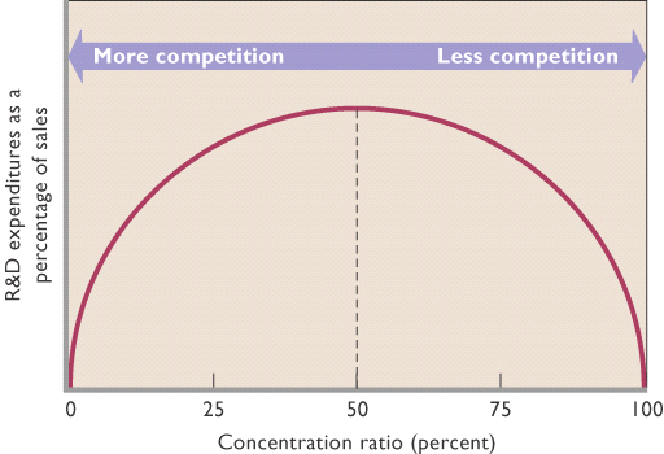
Market structure and technological advance.
Pure competition-Although purely competitive firms may have an incentive to keep ahead of their competitors, the small size of the firms and the fact that there are no barriers to entry and therefore they can earn only a normal profit in the long run, leads to serious questions as to whether such producers can benefit from and finance substantial R&D programs.Monopolistic competition-There is a strong profit incentive to engage in product development in this market structure. However, most firms remain small, which limits their ability to secure financing for R&D. Economic profits are usually temporary because there are few barriers to entry.
Oligopoly-The oligopolistic market structure is conducive to technical advance. Firms are large with ongoing economic profits, are protected by barriers to entry, and have large volume of sales. Although oligopolistic firms have the financial resources to engage in R&D, they are often complacent.
Pure monopoly-Pure monopolists have little incentive to engage in R&D. Since profits are protected by absolute barriers to entry, the only reason for R&D would be defensive, i.e., to reduce the risk of a new product or process that might destroy the monopoly.
Inverted-U Theory (p. 252-3; Figure 13-7)
